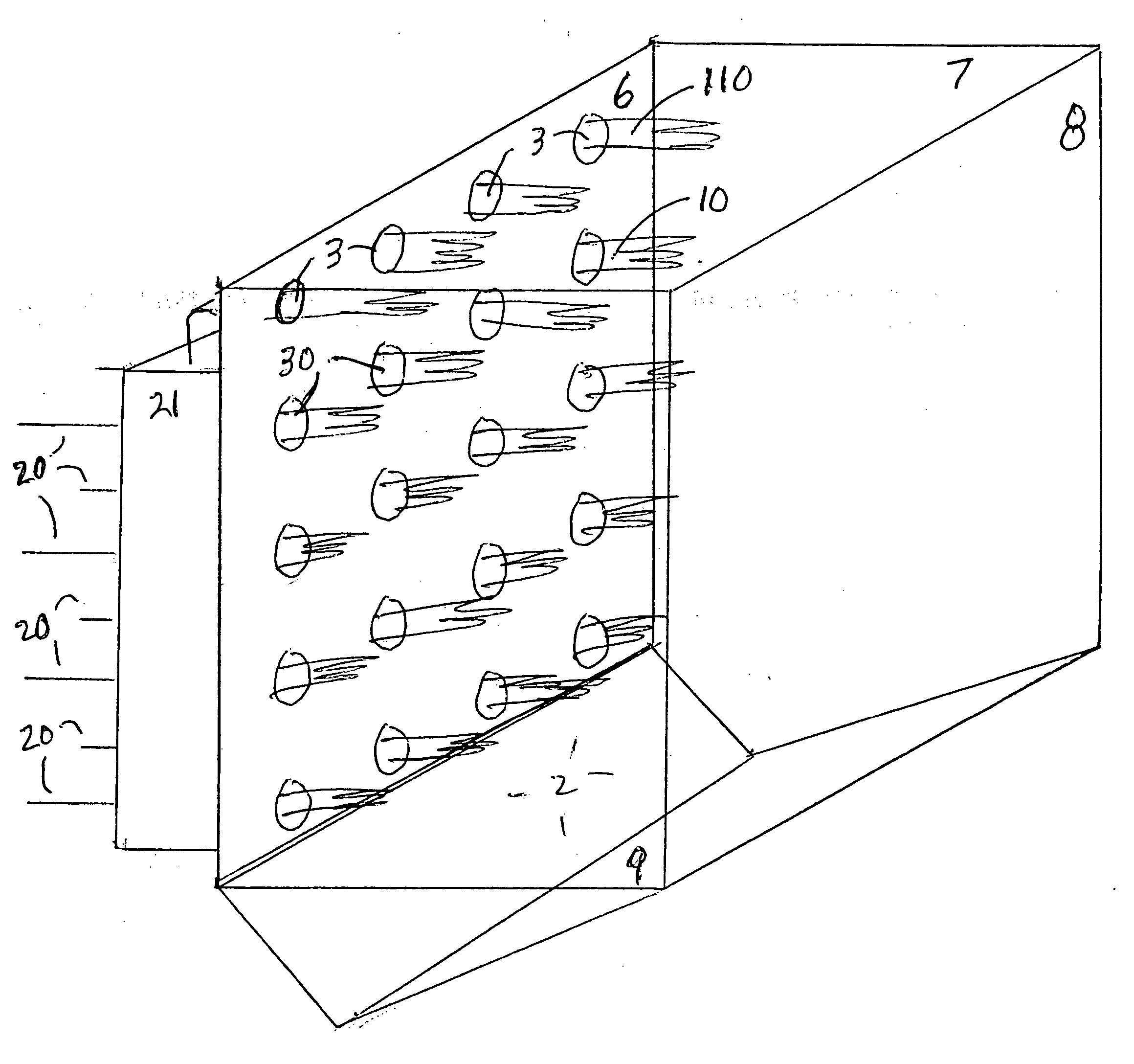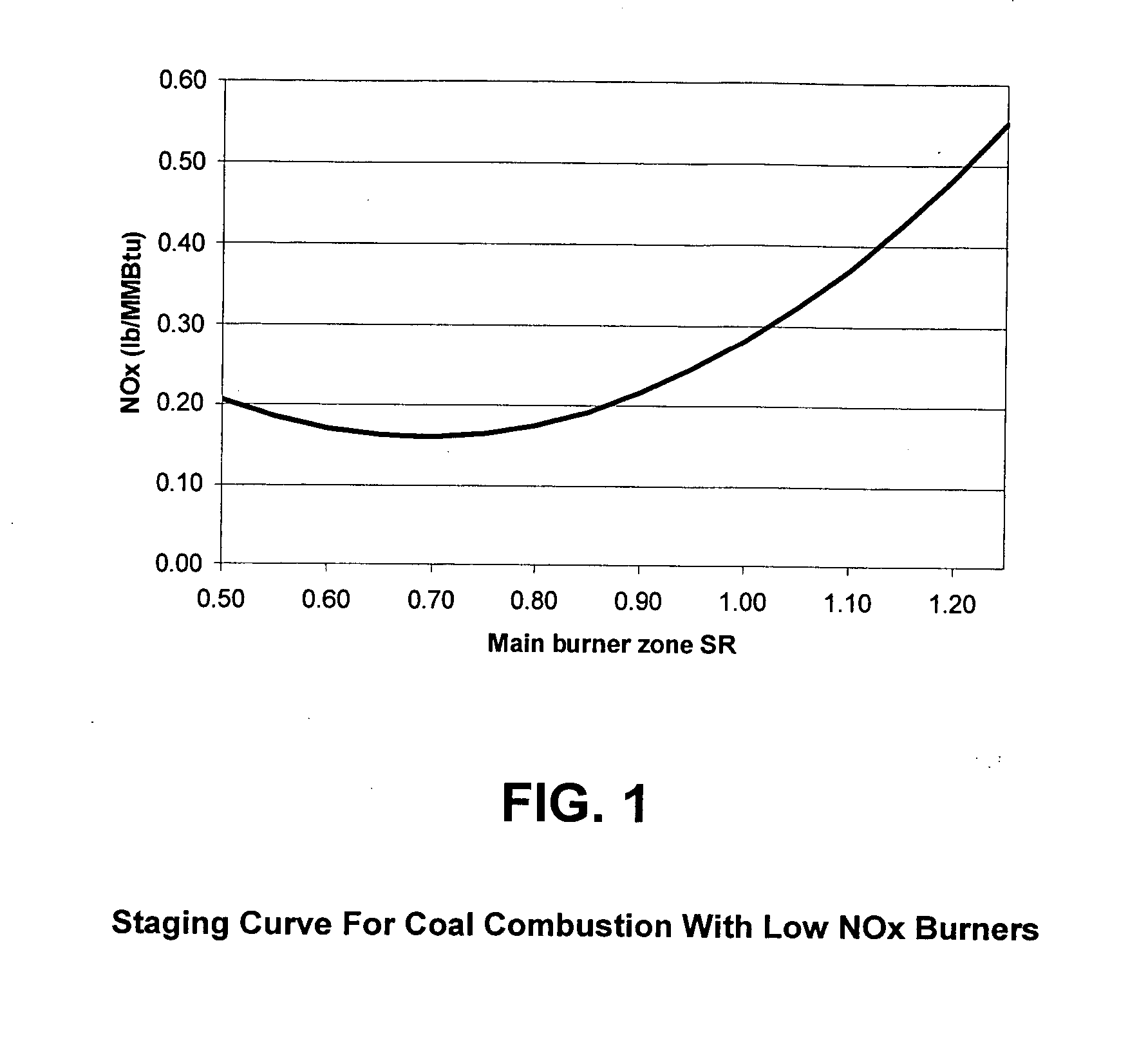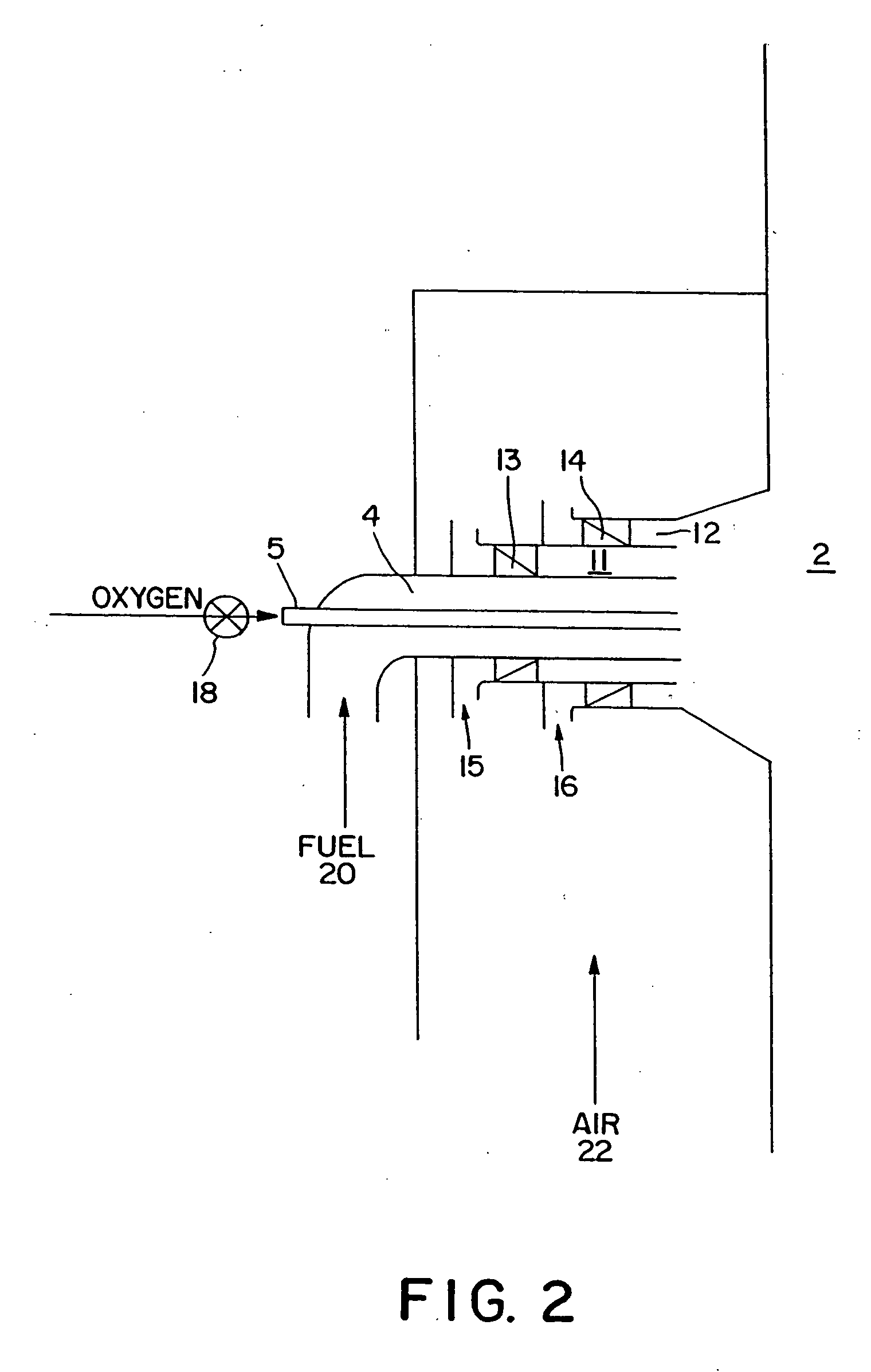Method of operating furnace to reduce emissions
a technology of emission reduction and furnace, applied in the field of combustion, can solve the problems of significant combustion taking place in the upper furnace, insufficient residence time for combustion, and difficulty in reducing so as to reduce the stoichiometric ratio of the second group, increase the stoichiometric ratio, and reduce the nox content and co content
- Summary
- Abstract
- Description
- Claims
- Application Information
AI Technical Summary
Benefits of technology
Problems solved by technology
Method used
Image
Examples
Embodiment Construction
[0029]FIG. 3A shows combustion device 1, which can be any apparatus wherein combustion is carried out in the interior 2 of the device. Preferred combustion devices include furnaces and boilers which are used to generate steam by conventional means, not shown.
[0030] The furnace in FIG. 3A is depicted with four rows of burners 30 arranged in four burners per row. For reference purposes, these burners are identified as shown in FIG. 3B by a letter and a number, with the letter identifying the row (A being the row highest in elevation and D being the row lowest in elevation) and the number identifying the columnar position in left-to-right ascending sequence.
[0031] The invention can be practiced as well with furnaces containing more or fewer than the 16 burners depicted in FIGS. 3A and 3B, and with more or fewer rows and more or fewer columns of burners. Also, the burners can be arrayed in a staggered or offset fashion so that the burners in adjacent rows lie on a diagonal line instea...
PUM
 Login to View More
Login to View More Abstract
Description
Claims
Application Information
 Login to View More
Login to View More - R&D
- Intellectual Property
- Life Sciences
- Materials
- Tech Scout
- Unparalleled Data Quality
- Higher Quality Content
- 60% Fewer Hallucinations
Browse by: Latest US Patents, China's latest patents, Technical Efficacy Thesaurus, Application Domain, Technology Topic, Popular Technical Reports.
© 2025 PatSnap. All rights reserved.Legal|Privacy policy|Modern Slavery Act Transparency Statement|Sitemap|About US| Contact US: help@patsnap.com



